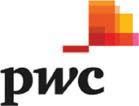Policy change on residential property ‘change of use’ rules

Michael McNeill takes us through HMRC’s policy change on the application of deemed self-supply provisions following the decision in Balhousie Holdings Ltd.
HMRC has announced a change of policy following the Supreme Court’s judgment in Balhousie Holdings Ltd on the application of the deemed self-supply provisions. These provisions take effect when a property is acquired or constructed and relieved from VAT because it is to be used for a relevant residential purpose, and within 10 years the use changes or the owner disposes of its entire interest in the property.
HMRC now accepts that a sale and leaseback of the property, where the owner continues to occupy and to use the property for the relevant residential purposes, will not trigger the self-supply. However, HMRC maintains that the sale and the leaseback must still be treated as separate transactions.
Background
The case concerned a taxpayer which had acquired a care home. The supply to the taxpayer was zero rated because the property was to be used by the taxpayer for a ‘relevant residential purpose’, i.e. as a care home. However, zero rating in those circumstances is subject to ‘change of use’ self-supply provisions whereby a VAT charge is imposed if, within 10 years of the zero rated acquisition, the property owner disposes of their entire interest in the property or changes the use of the property.
The taxpayer in that case had, following its acquisition of the property, obtained funding by means of a sale and simultaneous leaseback of the property, and, despite the fact that the taxpayer remained in occupation and continued to use the property for the relevant residential purpose as a care home, HMRC sought to impose the change of use deemed supply VAT charge, arguing that the taxpayer had disposed of its entire interest in the property.
The Supreme Court ultimately held that the change of use provisions were not engaged, because the simultaneous sale and leaseback preserved the taxpayer’s interest in the property without interruption. There was therefore no break in the operation of the property as a care home, and so no change of use.
HMRC change in policy
HMRC has announced that its revised policy on the application of the self-supply is as follows.
“The disposal of your entire interest in a property will not occur when all the following conditions are in place:
- a qualifying property must have been purchased;
- when the property is sold, there must be an immediate lease in place, which is a seamless transaction with no time lapse;
- the lease must be for the remaining term of the 10 years from the original purchase date or longer;
- the property must be continually used or operated for a qualifying purpose, meaning the business suffers no break in trade during the sale and leaseback.
If these conditions are not met then the sale of the property or the giving up of a long lease within the 10-year period will be subject to the self-supply charge for the remaining term, as you will have disposed of your entire interest in the property within the 10 year period.”
Commentary
Following the Supreme Court’s judgment, HMRC’s change of policy was not unexpected. However, this was a case concerning only change of use, and we note that HMRC is careful to stress that it still regards a sale and leaseback arrangement as two separate transactions. This means that taxpayers and their counterparts entering into such transactions must carefully consider the VAT treatment of each transaction.
The CJEU’s judgment in Mydibel might be regarded by some as suggesting that a sale and leaseback should be regarded as ‘a whole’, and almost disregarded for VAT purposes. However, that does not appear to be HMRC’s interpretation of UK sale and leaseback transactions, and so it will be necessary to take into account the liability of the two supplies, options to tax, the Capital Goods Scheme etc. in order to ensure any VAT analysis is sound.

